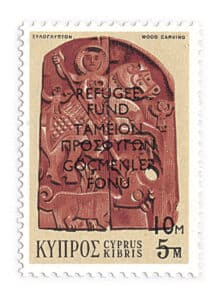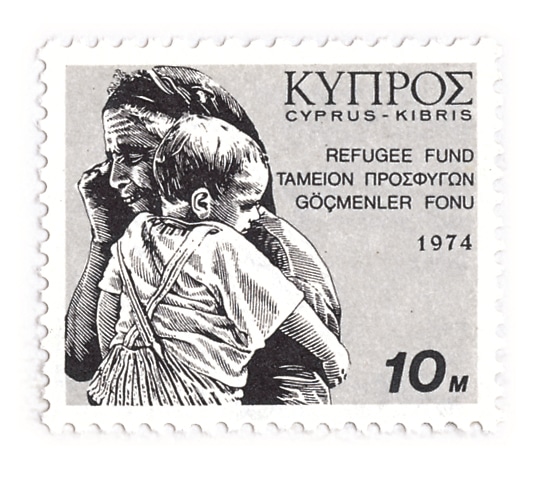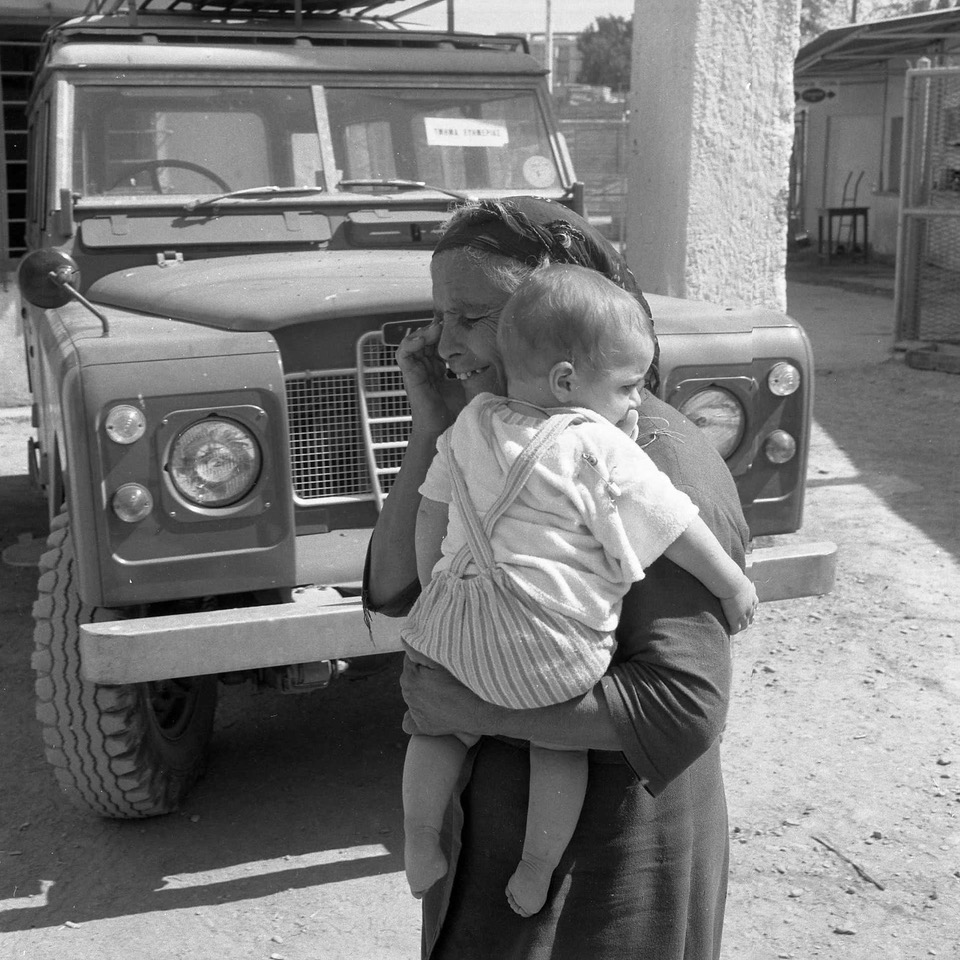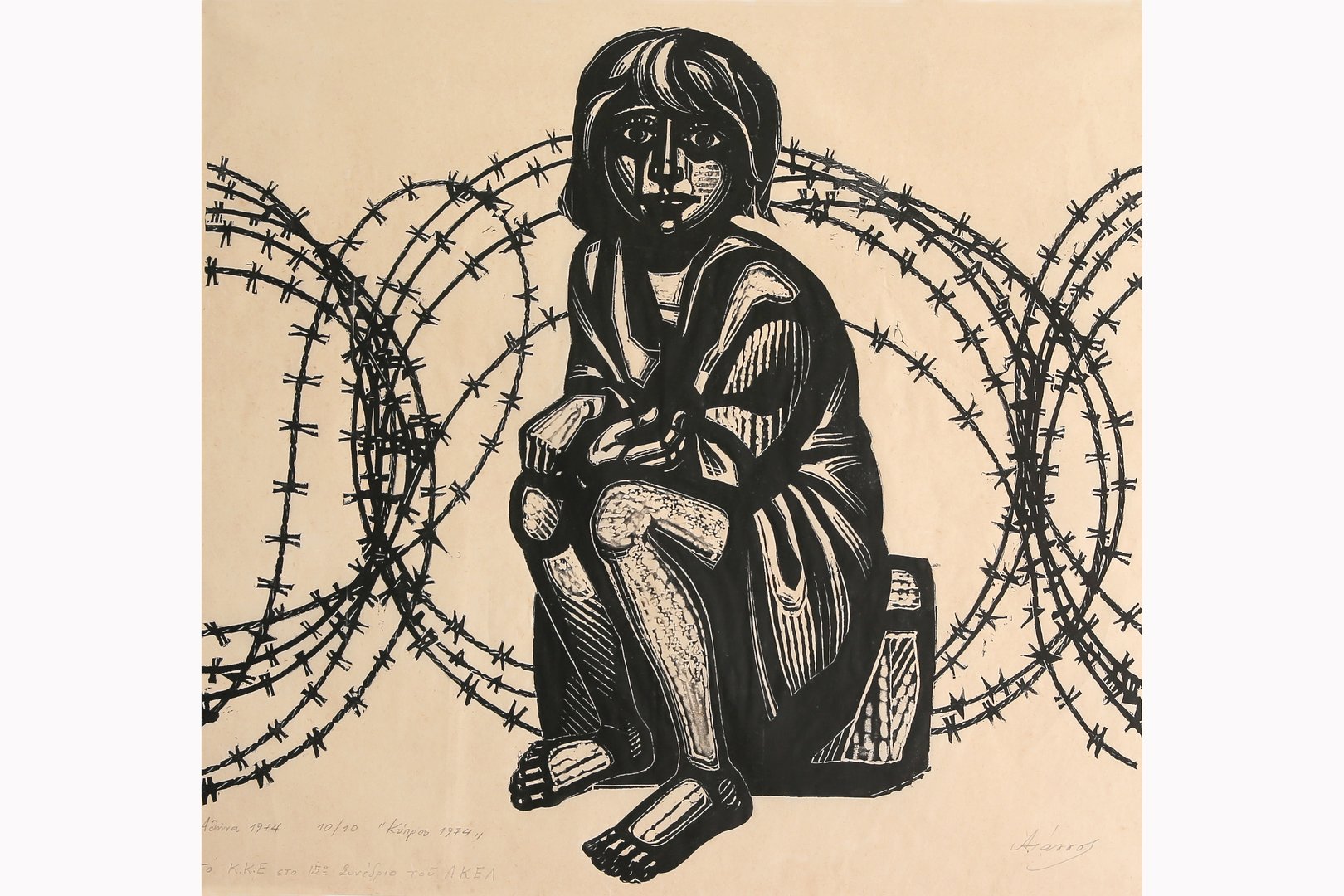A striking image of what it meant for thousands forced to leave their homes serves as a reminder through its use thousands of times a day finds Eleni Philippou
Launched just a few weeks after the invasion to help raise funds for those who has been forced to leave their homes, the Cyprus refugee stamp passes through hundreds of hands, often unnoticed, on a daily basis, a reminder of a history that has shaped the modern history of the island.
But the familiar image of a young girl sitting in front of barbed wire was not how the story started.
A stamp for refugees was first mooted on September 12, 1974, just 54 days after the invasion. The council of ministers approved a proposal titled ‘Additional Postal Fee’ to create a special Refugee Fund stamp. On October 1, 1974, the first refugee stamp was released featuring a carved wooden icon of Saint George on horseback. With the stamps quickly running out, two weeks later a new proposal was sent in to create another refugee stamp.

The first stamp had an image of Saint George
A black and white photograph by Bambis Avdelopoulos depicting a crying woman holding a young boy in her arms was the basis for the second refugee stamp, released on December 2, 1974. It remained in circulation until January 1977 when the third refugee stamp was introduced.
A. Tassos’ engraving of a girl and barbed wire was created after the 1974 events and to this day, 46 years since its introduction, it remains the one stuck to all letters and parcels with Cyprus stamps.
“The refugee child by A.Tassos has always held a special place in my heart and mind,” said art historian Maria Paphiti, who is behind an exhibition opening this week dedicated to the stamp.
“As a child, I identified with her because she is exactly my age. Also, her figure was very familiar to me, for I saw her coming and going in our home regularly, on the stamps affixed to all the envelopes we received and sent by post. The lonely figure of the refugee child, sitting in front of the cold and hostile barbed wire, used to shock me, causing overwhelming emotions and raising questions for me. I was sad for the child and wondered how she must have felt. Attempting to interpret her feelings, I was trying to put myself in her shoes.”

The second Refugee Stamp
The girl on the stamp was a silent part of Paphiti’s life, a figure she knew well, like most Cypriots. A pivotal moment for her and a catalyst for creating the exhibition was an unassuming walk in April 2022 when she came across a piece of graffiti in the parking lot of the Dianellou and Theodotou high school in Nicosia, which also featured the same girl.
“Questions began to unfold in my mind,” she said. What is happening nowadays with the refugee stamp? And given the fact the internet has changed out methods of communication, how many people still post letters and packages in the traditional way, affixing a refugee stamp? What does the contemporary generation know about it?
“How many of us are aware of the history and raison d’etre of the refugee stamp, a symbol, which for many is visually more powerful even than our flag itself?”
She photographed the graffiti, deciding to put together an exhibition highlighting the stamp and its history as nostalgia for those familiar with it and education for those who aren’t.

Bambis Avdellopoulos’ photo that served as the basis of the second stamp
Prosfigosimo: A Stamp for the Refugees of Cyprus. The Story of a Symbol opens on Tuesday narrating the history of the stamp and its significance.
A first part presents the circumstances from which the refugee stamp emerged, while a second focuses on the central artwork of the exhibition, the engraved woodcut by Greek artist A.Tassos. The third part concentrates on the influences that this artwork had on the artistic production of Cyprus and includes a selection of art that displays the consequences of contemporary refugeeism.
The final section of Prosfigosimo is dedicated to the closed city of Famagusta as another reminder of displacement, division and barbed wire as A.Tassos’ engraving also depicts.
“The seemingly insignificant refugee stamp,” Paphiti concluded, “has been present to this day, documenting that the reason for which it was established, namely the displacement and its consequences for the Cypriot people, continue to exist. Its presence is identified with the lives of those Cypriots, who are still refugees in their own country. The Refugee Child of A.Tassos, the ‘Kypriotaki’ (little Cypriot), as he called it, remains their most faithful and unwavering witness.”
Prosfigosimo: A Stamp for the Refugees of Cyprus. The Story of a Symbol
Exhibition by Maria Paphiti on the refugee stamp of Cyprus. Under the auspices of House President Annita Demetriou. March 28-29, April 4-7, 19-22 and 24-28. 10am-2pm. On April 20 and 27: 10am-6.30pm. House of the Citizen, Nicosia. Tel: 99-380685







Click here to change your cookie preferences